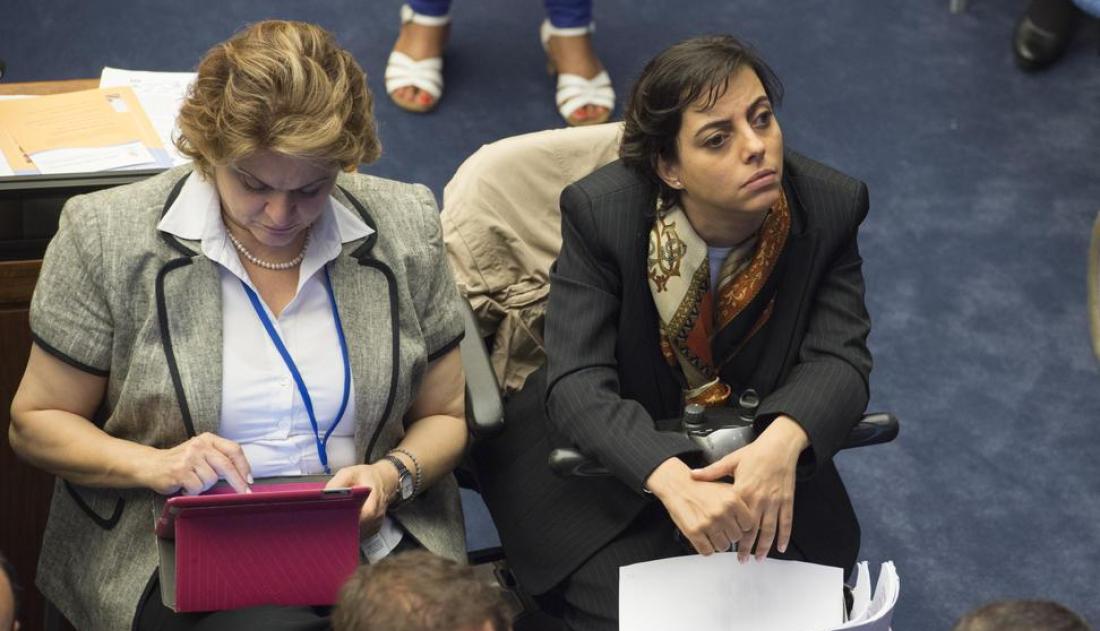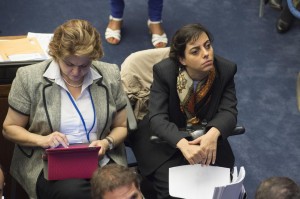
 In September, countries will have the opportunity to adopt a set of global goals to end poverty, protect the planet, and ensure prosperity for all. Find out more about Disability and the Sustainable Development Goals (SDGs).
In September, countries will have the opportunity to adopt a set of global goals to end poverty, protect the planet, and ensure prosperity for all. Find out more about Disability and the Sustainable Development Goals (SDGs).
During the 2012 United Nations Conference on Sustainable Development (Rio+20, Member States agreed to launch a process to develop a set of sustainable development goals (SDGs) to succeed the Millennium Development Goals (MDGs), whose achievement period concludes in 2015.
The SDGs are to address all three dimensions of sustainable development (environmental, economic and social) and be coherent with and integrated into the United Nations global development agenda beyond 2015.
In September 2013, at the United Nations, a 30-member Open Working Group of the General Assembly was tasked with preparing a proposal on the SDGs. In July 2014, the Open Working Group drafted and presented to the General Assembly a proposal for sustainable development goals. The envisaged SDGs have a time horizon of 2015 to 2030.
Disability is referenced in various parts of the draft proposal on the SDGs and specifically in parts related to education, growth and employment, inequality, accessibility of human settlements, as well as data collection and monitoring of the SDGs, for instance:
-
Goal 4 on inclusive and equitable quality education and promotion of life-long learning opportunities for all focuses on eliminating gender disparities in education and ensuring equal access to all levels of education and vocational training for the vulnerable, including persons with disabilities. In addition, the proposal calls for building and upgrading education facilities that are child, disability and gender sensitive and also provide safe, non-violent, inclusive and effective learning environments for all.
-
In Goal 8: to promote sustained, inclusive and sustainable economic growth, full and productive employment and decent work for all, the international community aims to achieve full and productive employment and decent work for all women and men, including for persons with disabilities, and equal pay for work of equal value.
-
Closely linked is Goal 10, which strives to reduce inequality within and among countries by empowering and promoting the social, economic and political inclusion of all, including persons with disabilities.
-
Goal 11 would work to make cities and human settlements inclusive, safe and sustainable. To realize this goal, Member States are called upon to provide access to safe, affordable, accessible and sustainable transport systems for all, improving road safety, notably by expanding public transport, with special attention to the needs of those in vulnerable situations, such as persons with disabilities. In addition, the proposal calls for providing universal access to safe, inclusive and accessible, green and public spaces, particularly for persons with disabilities.
-
Goal 17 stresses that in order to strengthen the means of implementation and revitalize the global partnership for sustainable development, the collection of data and monitoring and accountability of the SDGs are crucial. Member States are called upon to enhance capacity-building support to developing countries, including least developed countries (LDCs) and small island developing states (SIDS), which would significantly increase the availability of high-quality, timely and reliable data that is also disaggregated by disability.
 Welcome to the United Nations
Welcome to the United Nations


